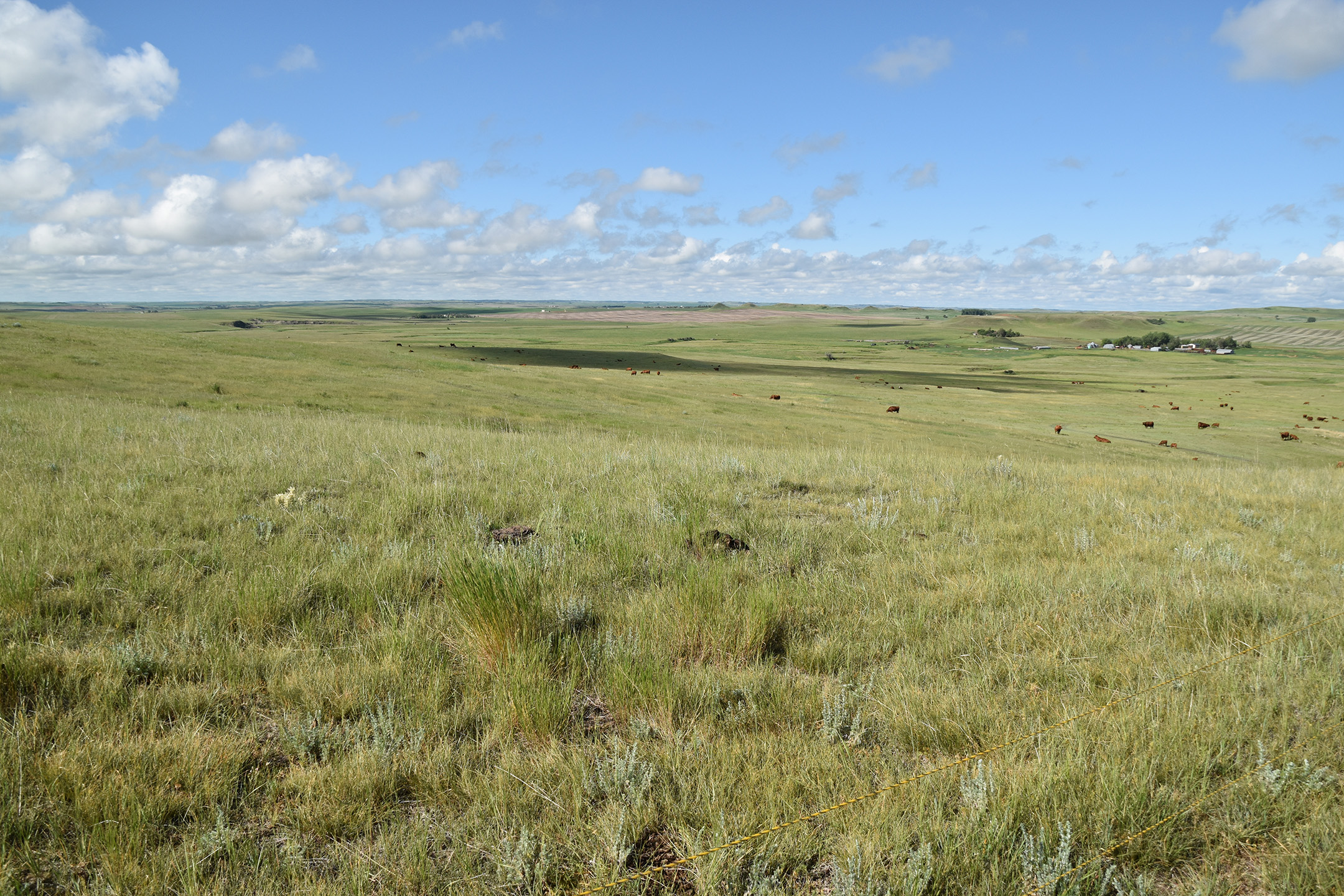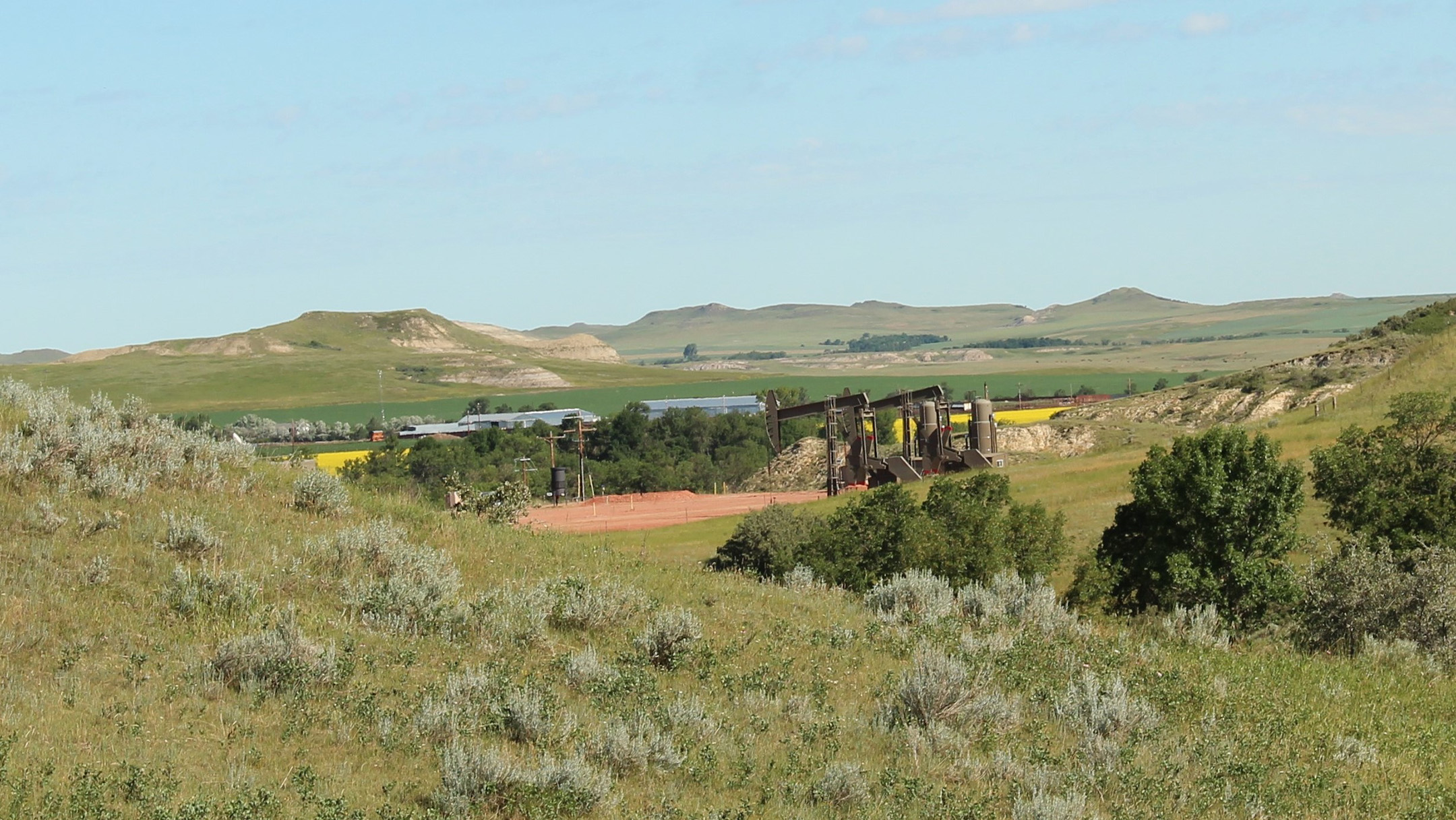Rangelands of the Great Plains are a highly diverse—and endangered—ecosystem filled with subtle beauty that is often underappreciated. It's easy to give rangelands a quick glance and write them off as large expanses of "just grass." But they are so much more, composed of a diversity of plants, including grasses, sedges, wildflowers, and shrubs that provide forage for domestic cattle as well as wild herbivores such as bison, deer, elk, and pronghorn, and habitat for countless other wildlife species. Healthy rangelands provide ecological services, including carbon sequestration, water filtration, erosion control, and nutrient cycling, and offer many recreational opportunities for people.
About 662 million acres of the contiguous United States are rangeland. The majority of it is in the Great Plains and western states, where rangelands form some of the most iconic landscapes, celebrated in movies and literature. From the Rockies westward, most of these areas are public lands, but within the Great Plains, rangelands are mostly privately owned and ranchers are essential partners in grassland conservation.

Healthy rangelands provide forage for livestock and pollinator habitat. Cattle graze in the distance on this ranch in North Dakota. (Photo: Xerces Society / Sarah Hamilton Buxton.)
Rangelands are important for native pollinators as they can provide vast areas of connected habitat that supports a diversity of wildflowers with overlapping bloom periods, which provide valuable food resources (pollen and nectar) for pollinators throughout the growing season. Rangelands also offer breeding habitat for native pollinators as solitary bees nest in small patches of bare ground or hollow stems and bumble bees use bunchgrasses for nesting sites. These diverse plant communities also provide breeding habitat for moths and butterflies, and the woody debris and leaf litter that occurs naturally provides excellent overwintering shelter and habitat for many invertebrates, including beetles, flies, and wasps.
In turn, pollinators are vital components of a healthy rangeland ecosystem. They contribute to plant diversity by providing the essential service of pollination, allowing many rangeland wildflowers, vines, and shrubs to reproduce and set seed and fruit. These fruits and seeds provide food for many wildlife species. Also, the pollinators themselves are an excellent food source for wildlife, including game species such as pheasants, quail, and grouse.

An adult regal fritillary butterfly on hoary verbena on Nebraska rangeland. (Photo: Chris Helzer/The Nature Conservancy.)
Pronghorn, sage-grouse, and black-footed ferrets are all animals that are dependent on healthy rangelands to survive and garner considerable press and conservation focus. There are, however, many smaller species who also need rangeland to exist and are often overlooked. For example, the mining bee Andrena helianthiformis is a pollen specialist on purple coneflower (Echinacea spp.) and is thought to be found only in prairies, even though purple coneflower can be found in other landscapes. Similarly, the regal fritillary butterfly (Speyeria idalia), which relies on grassland violets as a caterpillar host plant, is rarely found outside of rangeland. Great Plains rangelands are also an important breeding and feeding ground for the monarch butterfly throughout the growing season, and late-season flowers fuel its fall migration to overwintering grounds in Mexico.
Approximately half of all grasslands in the United States have been lost since European settlement, making our native rangelands one of the most endangered ecosystems in the world. Rangelands face multiple threats, including fragmentation due to oil and gas development, encroachment by urban development, and conversion to cropland. According to the World Wildlife Fund’s 2020 Plowprint report, conversion of native rangeland to cropland occurred at an average rate of four football fields every minute from 2014–2018. To protect remaining grasslands, it’s vital that natural resource professionals and ranchers work together to conserve and manage rangelands. A successful ranching operation is one of the best ways to ensure private rangelands aren’t converted to cropland or other uses and remain intact as vital habitat for wildlife.

Canola fields, blooming bright yellow, and oil drilling development encroach onto native rangeland in western North Dakota. (Photo: Xerces Society / Jennifer Hopwood.)
Rangelands evolved with natural disturbances, such as widespread grazing by large animals, wildfire, occasional flooding near waterways, and drought. Maintaining disturbance through active management is essential for healthy rangelands and pollinators. Idled rangeland that is not grazed, burned, or hayed is at risk of tree encroachment, invasion by exotic plant species, and accumulation of excessive amounts of litter (dead plant material) that hinders plant growth and seed germination, particularly for wildflowers that serve as food sources for pollinators. Management maintains or increases availability of the resources pollinators need, primarily by preventing grasses and woody plants from outcompeting wildflowers. It also can ensure small patches of bare ground persist for solitary bee nesting.
The challenge is that disturbances can harm pollinators in a number of ways. Overwintering pollinators, bees within nests, immobile or slow moving eggs or larvae, and even mobile adults may die in a prescribed fire or be eaten or trampled by livestock. Blooming wildflowers, caterpillar host plants, and above ground nesting sites can also be destroyed by fire or grazing, reducing habitat quality in the short term for pollinators. Despite these risks, when assessing long-term rangeland health, well-managed disturbances are necessary to maintain pollinator habitat on rangelands. Without active management, the habitat will decline and be lost.

Prescribed fire on a ranch in Oklahoma helps maintain plant diversity and wildlife habitat. Fire removes litter which can stimulate new grass growth and increase forage production, palatability, and nutritional content. (Photo: Ray Moranz)
To begin viewing rangelands through the eyes of a pollinator and outlining a framework for the management of healthy rangelands for livestock and pollinators in the Great Plains, here are two resources that you will find helpful.
- Fact sheet: Rangeland Management and Pollinators: A Guide for Producers in the Great Plains, a 6-page guide that outlines the best management practices for pollinators on rangelands, including broad guidance on grazing, integrating fire with grazing, haying, brush and weed control, and interseeding.
- Webinar: Supporting Pollinators on Rangelands in the Great Plains and Western US, which discusses the best management practices as well as information on how to manage western rangelands for pollinators.
Incorporating pollinator conservation on rangelands may not require large-scale changes in management but rather, a shift to a more holistic view of rangelands as permanent habitat for creatures large and small. Balancing the risks and rewards of management for livestock and wild species requires flexibility and planning, but ranch profitability and wildlife habitat can go hand in hand.
Further Reading
Learn what you can do to Bring Back the Pollinators and take the Pollinator Protection Pledge.
Find information about Rethinking Pesticide Use in Yards & Gardens
The Pollinator Conservation Resource Center contains a wealth of information about how to help.
For farmers and food companies: Bee Better Certified.
For towns, cities, and colleges: Bee City USA & Bee Campus USA.
Participate in community science with Bumble Bee Watch.





